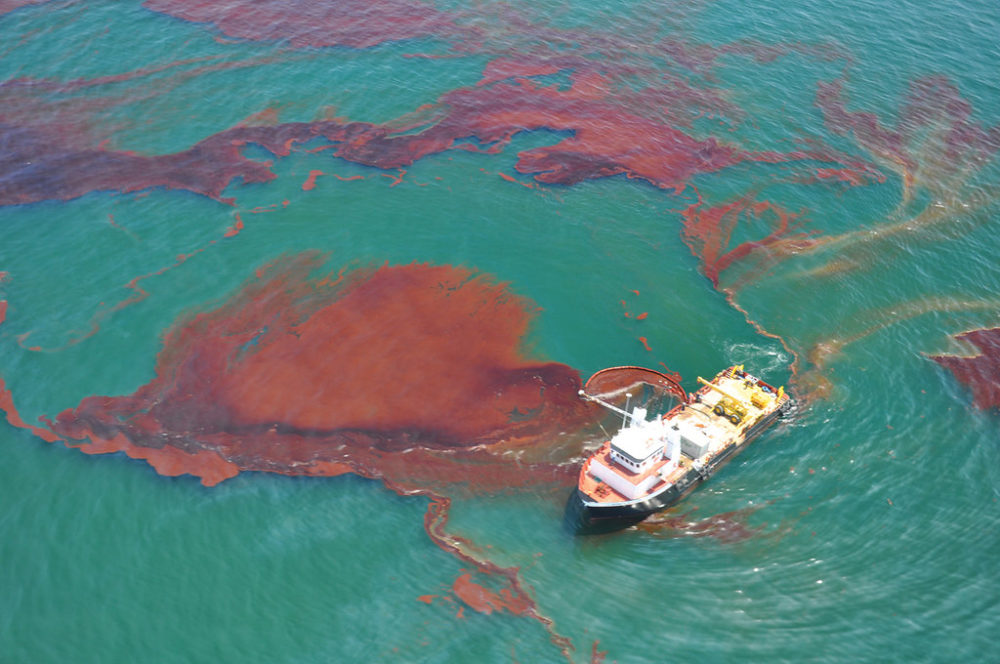
It has been ten years since one of, if not the darkest days in the oil industry’s history – the Deepwater Horizon oil spill.
The disaster took place 41 miles off the coast of Louisiana, US in the Gulf of Mexico in April 2010, when about 4.9 million barrels of oil are believed to have leaked out into the ocean after a deep-sea drilling operation went catastrophically wrong.
It is regarded as the largest marine oil spill in history, having contaminated about 68,000 square miles of the Gulf, killing 11 crew members and leaving a devastating impact on the thousands of species that inhabited the surrounding waters.
The Deepwater Horizon rig, in the Macondo Prospect, was operated by London-headquartered BP, which has paid around $75bn in clean-water fees and legal settlements for its part in the incident, according to The Washington Post.
Here, NS Energy takes a look at how the spill unfolded and the impact it had on the Gulf.
How did the Deepwater Horizon oil spill happen?
The owner of Deepwater Horizon was offshore drilling company Transocean, which was attributed 30% of the blame for its role in the disaster.
It leased the rig to BP, which has shouldered 67% of the liability, while US energy giant Halliburton picked up 3% of the responsibility for its role as a cement contractor for the project.
The oil well was located more than 18,000 feet below sea level and operated in water depths of up to 5,000 feet.
On the night of 20 April, 2010, natural gas shot through the concrete core of the well, which had been recently installed by Halliburton, before expanding into the drill riser and into rig, where it ignited and exploded.
Flames then engulfed Deepwater’s platform, putting the lives of the 126 crew members on board at risk – seven of which were from BP, alongside 79 from Transocean, while the remaining employees were contractors from various other companies.
Most workers were rescued by lifeboats or helicopters, but 11 crew members were not found, and were later judged to have died in the aftermath of the explosion.
The rig sank to the lower depths of the ocean two days later, the same day that BP claimed to have found the cause of the oil leak.
Efforts to stop Deepwater Horizon’s oil spill
BP tried to activate the rig’s blowout preventer (BOP) — a fail-safe mechanism that is designed to close the channel through which oil is drawn — but the device malfunctioned and the fuel continued to pour out into the ocean at a high rate.
In May 2010, Transocean began drilling two relief wells, which are intended to intersect an oil or gas well that has experienced a blowout.
After months of working round the clock to stem the spill, it was announced the operation had been successful in plugging the Deepwater well in September 2010, when former US national incident commander Thad Allen declared the well “effectively dead”.

After leaking for 87 days, BP estimated that there had been a flow rate of between 1,000 and 5,000 barrels per day (bpd).
But the Flow Rate Technical Group (FRTG) — a group of scientists and engineers from the US federal government, universities, and research institutions brought together for an official scientific-based estimate — claimed the initial flow rate was in fact 62,000 bpd – giving an overall total of 4.9 million barrels.
But the company continued with its lower estimations and argued that the government figures did not reflect more than 810,000 barrels of oil that had either been collected or burned before it could enter the ocean.
Financial penalties for the Deepwater Horizon oil spill
The spill had a devastating effect on the region, with marine life and the coastlines of Louisiana, Mississippi, Alabama, and Florida swimming in oil — which had a knock-on effect for many businesses and fisherman.
To reduce the spread of oil, floating booms stretched across 4.2 million feet, and almost two million gallons of dispersants were used to remove as much of the oil from the water as possible.
Following government pressure, BP created a $20bn fund to compensate those hit hardest by the disaster.
An investigation was launched in June 2010 by the US Department of Justice (DOJ), before it would go on to sue BP, Transocean, and Anadarko — a minority owner of the well — in December 2010 for violating the Clean Water Act and Oil Pollution Act.
In 2013, Transocean paid a $1bn civil penalty and a $400m criminal penalty before resolving a $212m claim in 2015.
Anadarko forked out $160m for its role at the rig, while Halliburton agreed to pay a $1.1bn settlement.
It also paid a $200,000 fine after it was revealed employees had destroyed evidence related to the spill.
BP has paid out up to $75bn to help with the clean-up costs and the charges imposed, which included an $18.7bn fine — marking the highest-ever penalty imposed by the US government against an individual company.






